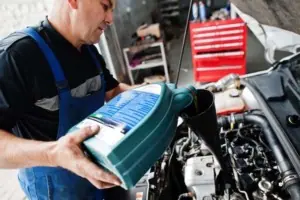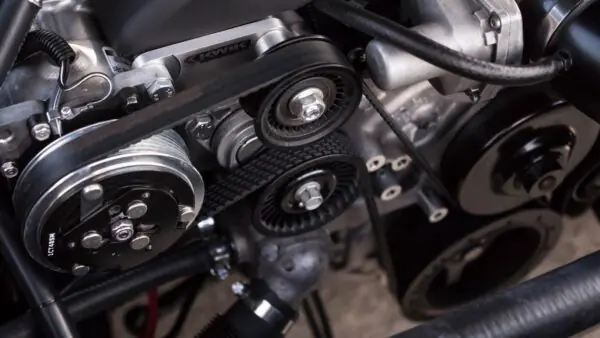To avoid needless system damage, power steering fluid replacements should be carried out in accordance with manufacturer recommendations.
Power steering fluid replacements should be carried out by manufacturer recommendations to avoid unnecessary system damage.
Most of these systems use fluid to generate hydraulic pressure, lessening the effort needed to steer your car.
Additionally, the fluid has detergent and anticorrosive chemicals that clean and lubricate the system’s interior.
Additives ensure smooth functioning, prevent fluid blockages, and shield moving parts from excessive friction.
Over time, these chemicals deteriorate and can no longer adequately safeguard system parts.
As hoses age, rubber fragments break off and get sucked into the fluid, causing clogs.
Water is attracted to contaminated, worn fluid, accelerating degradation, corroding hoses and connectors, and causing leaks.
Clogs or leaks that prevent the fluid from flowing will cause the steering performance to deteriorate and become choppy.
Repair of Leak
Leaks in the power steering fluid can make it harder to steer, which could result in uneven steering or loss of control.
Low fluid levels can also lead to pump failure, harm to other parts, and inefficient fuel use.
Leaks should be fixed as soon as discovered to avoid more expensive repairs like power steering pump replacement.
Without this technology, controlling the vehicle becomes more challenging the slower the speed is.
If you like to be more ‘hands-on’ with your vehicle, please browse our extensive library of manuals for your make and model: Repair Manuals

Replacement Serpentine Belt
These systems rely on an electric motor in some more recent cars, which helps the driver’s efforts to steer the car or truck.
In contrast, most cars’ drive or serpentine belt powers the pump that pressurizes the fluid and generates a hydraulic steering aid.
Over time, the serpentine belt deteriorates, putting undue strain on the pump and other devices it drives.
Preventing damage to these components involves following factory service recommendations for serpentine belt replacement.
Signs Your vehicle requires power A system inspection or steering service:trong>
-Low fluid levels or contamination may be signs of a leak.
-rough, challenging, or choppy turning
-Whining or high-pitched sounds following a cold start
-issues with the steering mechanism
-Pump issues
-The car is veering to the side.
Driving Advice to Prevent Suspension or Steering Repair-Required Damage:
-Be careful not to hit potholes or bumps hard.
-No doughnuts, and don’t tilt the wheel sharply to one side and hold it there for more than a few seconds!











